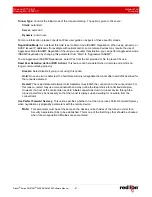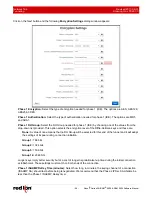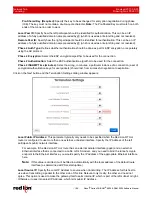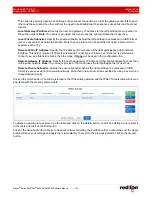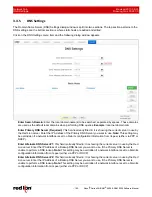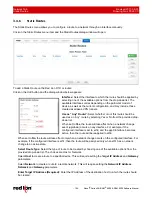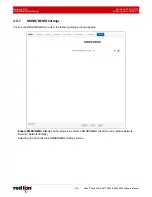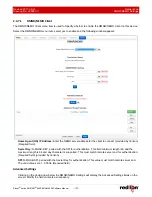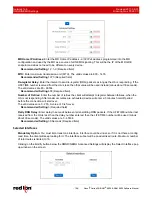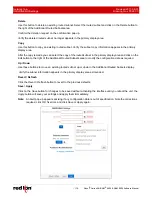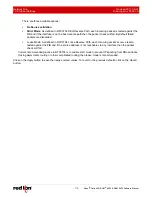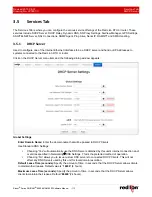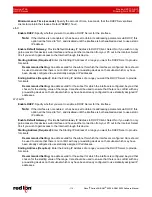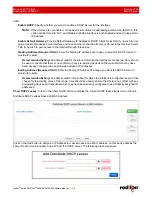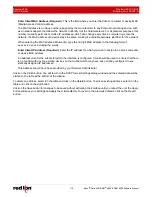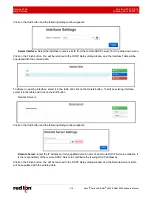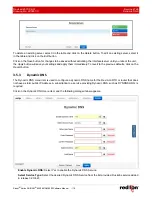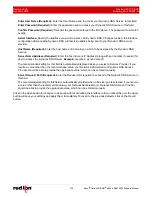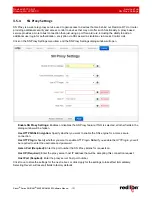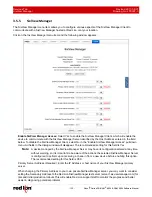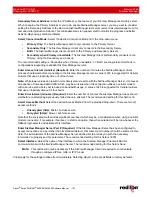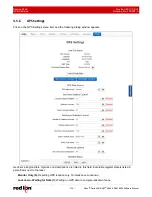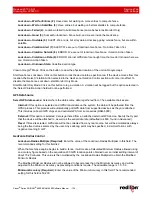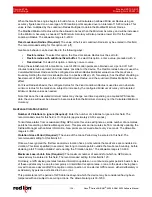
Revised 2017-08-31
Network Tab
Drawing No. LP0997-C
TCP Global Settings
Sixnet
®
Series SN/RAM
®
6000 & RAM 9000 Software Manual
- 111 -
3.4.8
TCP
Global
Settings
Click on the
TCP Global Settings
menu item the following dialog window appears:
[SYN] Tx Timeout (Required):
Specifies the timeout value, in seconds, for SYN packets for connection
tracking. 65 is generally recommended default, which differs from the system default of 120. The
recommended tuning range is 30-120.
Enter Timeout (Required):
Specifies the amount of time, in seconds, that a TCP connection can remain in an
idle state before sending Keep-Alive Probes to verify that the remote end of the socket is still available. The
recommended setting for this field is:
10 - 30 for Ethernet connections where data usage is not an issue.
60 - 300 for cellular connections where total data usage must be considered.
Enter Maximum Probe Attempts (Required):
Specifies the acceptable number of failed probes that will be
sent to the remote end of a TCP socket before determining the connection to be failed and disconnecting. The
recommended values are 3-6.
Disable Path MTU Discovery:
Enable/Disable Path MTU Discovery. This might be useful if a private cellular
network is restricting MTU sizes along the network path and causing packet drops. The recommended value
for this field is No (off).
Enable Reverse Path Filter:
Select the desired Reverse Path Filter (rp_filter) from the drop down options.
Reverse path filtering is a mechanism adopted by the Linux kernel, as well as most of the available networking
devices to check whether a receiving packet source address is routable. When a device with reverse path
filtering enabled receives a packet, the device will first check whether the source of the received packet is
reachable through the interface it came in on.
•
If the received packet’s source address is routable through any of the interfaces on the device, the
device will accept the packet.
•
If the received packet’s source address is not routable through any of the interfaces on the device, the
device will drop that packet.

